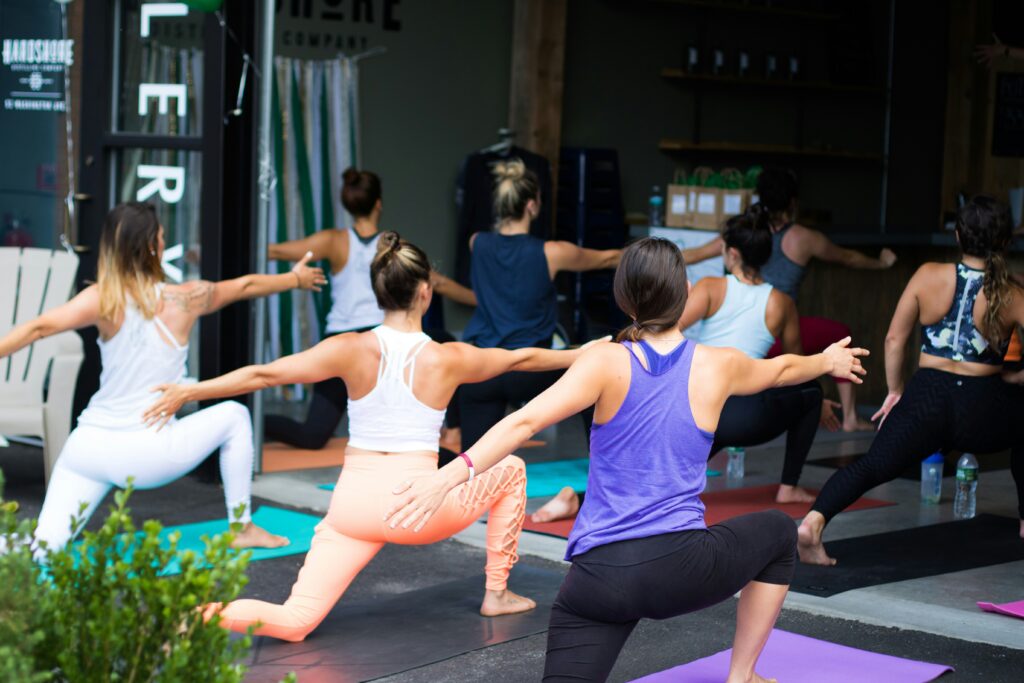admin
August 20, 2024
Beginner’s Guide to Power Yoga: Benefits, Poses, and Tips

Power Yoga has gained immense popularity as a dynamic and invigorating form of yoga. It teaches traditional yoga poses at an increased pace, emphasizing strength and endurance. This exercise forms one of the best workouts for building up muscles, flexibility, and general fitness while enjoying mental benefits gained from yoga simultaneously. Whether you’re just starting out or looking to elevate your practice, this beginner’s guide to Power Yoga will introduce you to its benefits, basic poses, and how to get started.
Benefits of Power Yoga
Power Yoga offers an amazingly wide range of benefits for both body and mind.
Strengthens and Energizes:
Power Yoga holds postures for more time than other forms of yoga, besides helping one quickly flow through them. This can really build great strength in the muscles and enhance stamina; it works especially for those who would want to improve their athletic performance or look lean.
Ensures Cardiovascular Health:
Although it is a kind of yoga, power yoga is more aerobic than its conventional version. Power Yoga elevates your heart rate because of its pace, which exercises the heart and Burns calories.
Flexibility:
One other substantial benefit you can derive from practicing yoga regularly is that it visibly enhances your flexibility. The following yoga poses will stretch your muscles and joints, increasing your range of motion to minimize the chances of injury.
Reduces Stress and Anxiety:
Much like any other kind of yoga, Power Yoga is filled with deep breathing and mindfulness that can help cut down on stress, anxiety, and enhance mental clarity. The physical exertion also helps in releasing endorphins, which improves your overall mood.
Helps in Weight Loss:
The amount of exercise one gets through Power Yoga is great for burning excess calories and thereby excess weight. This coupled with its muscle-building properties will lead to a leaner and more toned body.
Essential Poses for Power Yoga Beginners
As a beginner, you should begin with the basics that develop your strength, balance, and flexibility. Some of the main beginner yoga poses to be included in your Power Yoga routine are:
Downward-Facing Dog (Adho Mukha Svanasana):
Strengthens arms, shoulders, and legs while stretching hamstrings and calves. It's also a great way to warm up your body at the beginning of your practice.
Plank Pose (Phalakasana):
Plank is a very nice core-strengthening pose, though it will in turn work the arms and shoulders. It's generally a basic pose used much of the time in Power Yoga when flowing from one pose to the other.
Warrior I (Virabhadrasana I):
This is one of the standing poses that builds strength in the legs while opening the hips and extending the chest and lungs. It also enhances concentration and balance.
Warrior II:
Similar to Warrior I, this asana makes one develop the strength of the legs and increases one's balance, but it also engages the inner thighs and helps in developing mental concentration.
Chair Pose:
This is a relatively difficult stance. It fights slackness in the midsection of your body by developing core power, strengthens legs, and improves balance. It's done regularly in many Power Yoga sequences as a way of increasing stamina.
Cobra Pose (Bhujangasana):
This backbend builds strength in the spine and opens the chest, creating flexibility in the upper body. Often, it is a part of flow sequences in Sun Salutation.
Tips for Starting Power Yoga
Starting a Power Yoga practice can be challenging, but with the right approach you can build a great base and enjoy the process.
Start Slow:
Advanced poses or fast moving sequences should not be rushed into. Begin with basic poses and build up the intensity of your practice as your strength and flexibility increase.
Focus on Breath:
Breathing is an important aspect of Power Yoga. Matching breathing to the movements helps in focusing and provides energy throughout the practice.
Listen to Your Body:
Power Yoga is physically demanding; hence, it is essential to be mindful of your body and not overexert. If the position looks uncomfortable or painful, then modify it or rest.
Props:
Blocks, straps, and blankets may be very helpful in keeping alignment and making the poses accessible. Never hesitate to use them, especially if you are a beginner.
Practice Regularly:
That is to say, consistency is the key if you want to see progress in your Power Yoga practice. Practice several times a week to build strength, flexibility, and endurance over time.
Development of a Power Yoga Routine
To get started with an effective Power Yoga routine, begin by warming up properly. Give your body a wake-up call for the intense workout ahead. Begin with Downward-Facing Dog and Plank to engage your muscles. Now, move into standing postures that build strength and stamina, such as Warrior I and II. Add in some balance poses to test your equilibrium, like Chair Pose. Close out your practice with cool-down postures, like Cobra Pose and Child’s Pose, which will open up and relax your muscles.
Here is one example of what the routine might entail:
- Warm-up: Downward-Facing Dog, Plank Pose
- Standing Sequence: Warrior I, Warrior II, Chair Pose
- Core Work: Plank Pose, Boat Pose (Navasana)
- Cool Down: Cobra Pose, Child’s Pose (Balasana)
Conclusion
Every energetic and truly rewarding Power Yoga practice offers many physical and mental benefits. Boosting strength, flexibility, reducing stress—the goals for which one does the workout or follows a regime might all be accomplished through regular Practice of Power Yoga. Start slow, listen to your body, and practice regularly to enjoy full benefits from this form of powerful yoga.
Frequently Asked Questions
Yes, one can modify Power Yoga for beginners. Start off slowly with easy postures and slowly build up in intensity as one gets more confident of the practice.
For best results, one should practice Power Yoga 3-4 times a week. Consistency is key to building up that strength and flexibility in the body.
Yes, the intensity of Power Yoga can certainly bring about calorie burn and consequent weight loss, especially when supplemented with a good diet.
No, you don’t have to be flexible to start. With regular practice, Power Yoga will increase your flexibility, so it doesn’t matter where you start from.
Wear loose, comfortable clothing that will allow a full range of motion. A good, grippy yoga mat is also important for stability in your practice.

